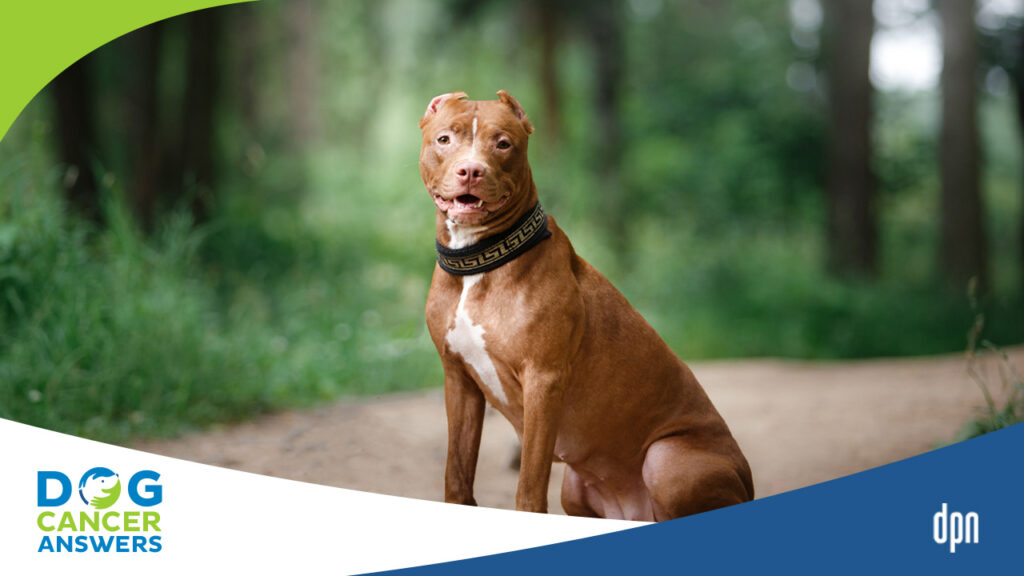EPISODE 112 | RELEASED March 15, 2021
Signs Your Dog Is in Pain | Dr. Demian Dressler Deep Dive
You always know if your dog is in pain … right? Not necessarily. Dr. Dressler explains how the sound of silence could mean your dog is experiencing chronic pain.
SHOW NOTES
If your dog is in pain, they yelp. Right? Wrong! Most often they just don’t “talk” about their pain. So how do we know if our best friend is OK? Dr. Demian Dressler joins us to discuss the many signs of pain. Some are subtle, and some you have to seek out.
A must-listen episode for any dog lover!
Dr. Demian Dressler is the author of The Dog Cancer Survival Guide: Full Spectrum Treatments to Optimize Your Dog’s Life Quality and Longevity.
The Short Form of the Glasgow Composite Pain Scale is great for dog lovers to use at home. You can find it in the article here: Development of the short-form Glasgow Composite Measure Pain Scale (CMPS-SF) and derivation of an analgesic intervention score (newmetrica.com)
>> Dr. Demian Dressler: [00:00:00] Um,
So if you know anybody who’s in chronic pain, for example, people have bad backs or something like that, they’re not walking around exclaiming ouch all the time. So if you’re trying to ascertain if your dog is in chronic pain, do not look for yipping. Cuz it’s not going to happen 99% of the time.
Welcome to Dog Cancer Answers, where we help you help your dog with cancer. Here’s your host, James Jacobson.
>> James Jacobson: [00:00:32] Hello friend. And thank you for joining us today for an investigation into pain. Now this is a big topic for dog lovers because none of us want our dogs to be in pain, it’s why we worry so much. I know it’s one of the things that I worry about a lot with my dogs, because dogs are famously stoic, which means we don’t even often know if they’re in pain at all. So the question is, how do you know if your dog is in pain? Well, Dr. Demian Dressler is here to give us some signs to look for. Dr. Dressler is the author of The Dog Cancer Survival Guide, which is our show’s main sponsor.
He has been a practicing veterinarian for over 20 years, and he considers pain management to be one of the most important parts of his job. Dr. Dressler, thanks for being with us today.
>> Dr. Demian Dressler: [00:01:29] Thank you.
>> James Jacobson: [00:01:30] We are going to talk a little bit about pain symptoms recognizing when your dog is in pain. How do you know it?
>> Dr. Demian Dressler: [00:01:38] Yeah. Well, if you’re handy with the internet, you can look up a document. I think it’s called the Glasgow Composite Pain Scale. It’s a way of looking at the animal and inferring pain.
>> James Jacobson: [00:01:52] Now, that’s the form that you or your veterinarian can fill out to see how much pain your dog might be in. I know that it was the result of a massive study at a veterinary school in Scotland.
I’ll have details about that at the end of today’s podcast. But let me ask you this because I’ve often wondered why is pain in dogs so mysterious. Why do vets need this form to fill out? Isn’t it obvious when a dog’s in pain?
>> Dr. Demian Dressler: [00:02:19] Pain is very, very, very weird, and it’s a very tricky subject, both in the human animal and in the non-human animal, because you can have two dogs that are undergoing a painful experience and you can have two people, and the experience of pain can be totally different between them.
Let’s first of all, look at, what’s not the thing to rely on a hundred percent of the time, particularly with chronic pain pain can be acute. That means it’s kicking in quickly. And so it’s a sharp experience, usually quick. There’s chronic, and chronic is ongoing. Dude, that’s usually not as sharp. That’s usually more throbbing and those, so you have acute pain, you have chronic pain.
And they’re a little bit different. So vocalization does happen with acute pain. So if you get stung by a scorpion or your dog gets stung by a scorpion, a lot of times there’ll be vocalization with that. So trauma. Vocalization is common. When I say vocalization, I’m talking about yipping, chronic pain, not at all.
You cannot look for signs of chronic pain that is ongoing pain and ask yourself. Well, is my dog barking or yipping? That’s totally false. It’s not going to happen, because in the same way that human beings in chronic pain don’t vocalize dogs don’t necessarily vocalize either. So if you know anybody who’s in chronic pain, for example, people have bad backs or something like that.
They’re not walking around exclaiming ouch all the time.
>> James Jacobson: [00:03:49] Yeah.
>> Dr. Demian Dressler: [00:03:50] So the body will generate tolerance. And the tendency to vocalize, cause it’s always going on, is not high. So that’s the first thing. So if you’re trying to ascertain, if your dog is in chronic pain, do not look for yipping that it’s not going to happen 99% of the time.
>> James Jacobson: [00:04:08] So your dog could be in pain and you don’t know it because they’re not yipping. What do you look for?
>> Dr. Demian Dressler: [00:04:13] So one of the best ways to tell if an area is painful is push on it, but be careful with that, because if it’s very painful and you may end up getting bitten, so it might be better to do that under veterinary supervision, but one of the best ways to tell if an area is discomfort is you simply place flat fingers on it and push, or you manipulate it in such a way that it elicits the pain response.
So for example, a leg, you know, you could flex or extend the front limb or pull it or whatever. And you know, a lot of times it’s difficult to do this if you’ve not done it before, but sometimes you can tell and they’ll look at you or they’ll jerk when they pull their leg away. And there’ll be some flinching reflex.
>> James Jacobson: [00:04:51] Sounds like you should be able to do this at home, initially.
>> Dr. Demian Dressler: [00:04:54] Well, you gotta be careful because if you happen to hit a painful area, you might get bitten if it’s really, really painful. So I don’t know that I’m recommending it a hundred percent at home, you know, be sensible and bear in mind that dogs do sometimes bite if you’re inflicting a painful stimulus on them.
So keep that in mind.
>> James Jacobson: [00:05:11] Okay. But then, I mean, you obviously don’t dig in anywhere I imagine you just hold it and then get a little bit firmer with your pressure or.
>> Dr. Demian Dressler: [00:05:18] Yep. Three or four fingers. Yes. You gradually push on the area and then you watch and you got to see your dog’s face. So you see their eyes and you got to look and you got to see what the expression is.
And you can tell pretty quick if you know your animal, like they’ll wince, and you can tell and you’ll be like, Oh, that didn’t feel verygood.
>> James Jacobson: [00:05:36] So he’ll be looking at you and then you do that. And then he winces.
>> Dr. Demian Dressler: [00:05:39] Well, he might not look at you, but when you do it, then they’ll look, usually they’ll be like, Hey, what’s that? What are you doing to me?
Or if you’ve got a very, very compliant dog, with some dogs are very compliant. They won’t necessarily, they’ll just like, say, okay, I’m allowing you to do this, but then you look at them and they’ll squint their eyes a little bit, they’ll go uh, uh stop. And you can tell, or they’ll try to move away from you. That’s another, you know, or, or they will try to pull away and, you know, you can tickle their feet and they’ll try to pull away too, or trim their nails.
So you gotta, you know, there’s a sensibility about this thing. You gotta look at things practically. The other thing too is you can get a baseline, meaning, well, maybe I’m jabbing my dog and my dog doesn’t like it. Like, if I’m lying, I’m trying to take a nap and somebody comes up and starts poking me with their fingers.
Maybe I’m going to move away. Not because I’m painful, just because I’m getting prodded. Well, then you prod a different area and that’s your baseline. So you need a comparison. So you compare like left and right. Or you compare it to other areas you say, okay, is my dog’s reaction to what I’m doing generally different in the area that I think might be painful.
Or is it just that my dog is wants to me not to poke at it. So you gotta get your baseline. That’s what I’m trying to say.
>> James Jacobson: [00:06:53] Okay. This is a good time to take a quick break. But when we come back, Dr. Dressler, I want to ask you about how you know, which part of the body hurts. We’ll be right back.
Okay, Dr. Dressler, you were about to tell us how to know where exactly the ouch is if your dog is in pain.
>> Dr. Demian Dressler: [00:07:18] You’ve got different types of pain that occur in different areas. So for example, mouth pain, you might say, okay, well, they’re not going to be chewing on hard things any longer, or they’ll spit it out. Or they’ll, they’ll resist chewing on things like the hard food or hard treats or whatever.
That’s mouth pain. Eye pain, ocular pain. If it’s one eye they’ll usually squint or wink and blink at you with one eye. So that’s eye pain. Now, if it’s both eyes, well, then they might blink both eyes or it could be deep eye pain, and those dogs just get lethargic. And people describe that as having a headache.
They don’t want to move around very much. Right? So nasal pain, a lot of times they’ll snurf or sniffle or paw at their nose. Ear pain, they shake their head, paw at their ears. Limb pain, they’ll bear less weight on the limb. Back pain. They don’t want to get up and down very well. Like they don’t want to stand up or stand down or they don’t want to go up and down stairs. Neck pain.
Sometimes they won’t bend their heads in a certain direction or they’ll, yip just out of the blue when you don’t expect it because they’re moving their neck, and people don’t realize that’s the painful stimulus. Abdominal pain. Sometimes they’ll be hunched and not want to walk around very much. Bladder pain.
They’ll usually strain to go pee very frequently as if they’re trying to get something out, but nothing is coming out. Lung pain or chest pain. It’s usually just lethargy and, and others don’t want to move around very much, but if it’s in like, if it’s in the airways, the wind pipes they’ll be coughing a lot. Because again, there’s a discomfort in there and they feel like they’ve got to get it out.
The rear end pain, they’ll lick their anus or they’ll scoot. That’s discomfort, you know, one or the other, but if it’s painful, they’ll actually chew back there. It’s interesting because, like people think of leg or limb pain where they think that like chewing of paws is connected with that. And nine times out of 10 that’s false.
>> James Jacobson: [00:09:10] So the chewing is not, but it’s the
>> Dr. Demian Dressler: [00:09:11] Nope. It’s reduced weight bearing. That’s almost always way more reliable. I mean, if you take a hundred dogs, like one of them will chew at the painful area if it’s in a leg, but a hundred percent of them will bear less weight on the leg. And it’s interesting because say you’re looking for a gait abnormality in terms of how the dog is walking.
You’re like, well, I don’t know. I don’t know. I don’t know what leg, but my dog’s walking funny. Well, you have them stand up and then you can just try to move the limb or tap on it and see what foot moves forward, better, easier, because that’s the one that they’re loading off of. Does that make sense. So if you’ve caught like a sore left foot, when you’re standing, even if you’re not hopping on your right foot, well, if somebody were to come push your sore left foot forward and try to slide it forward, it’s going to go a lot easier than the right foot because you’re loading up on the right foot.
>> James Jacobson: [00:10:03] So you just tap each foot and then try to
>> Dr. Demian Dressler: [00:10:05] Yeah, you kinda push them forward a little bit. And the reduced load limb, which is the painful limb, will move much more easily.
>> James Jacobson: [00:10:14] And then I imagine limps could really mean a whole host of different problems.
>> Dr. Demian Dressler: [00:10:20] Yeah, all kinds of problems with cancer being low on the list. But nonetheless, you should, you know, if your dog has an ongoing limping issue and it’s been more than three days or something, you should go get some x-rays at your veterinarians. And don’t forget to, don’t give your dog a big meal, when you go in. Like, make sure that you don’t feed them that morning, say. It’s a lot better because
For the x-rays.
Yeah, because a lot of times to get the good position, you have to give them a little sedative or something, so they relax on the table without this big fight, which nobody wants. And if they’ve got a full stomach, it’s a bad idea, they can throw up and aspirate.
>> James Jacobson: [00:10:54] Are there conditions that always cause pain?
>> Dr. Demian Dressler: [00:10:59] Well subject of cancer, I think the, the ones that, cause pain most frequently are your skeletal cancers. Osteosarcoma by far as the most common. It’s the ones that affect the skeleton, bone cancers, by far, are the ones that are much more consistently painful.
Hemangiosarcoma, the spleen gets painful when the spleen starts to get big and squeeze on things. Those dogs look like they’re in pain. The stomach will be very tense. If they bleed, the blood in the abdomen will also get irritating. That’s not fun. Lung tumors will create coughing. So that’s discomfort, I don’t, I don’t know about pain, exactly. If it’s big enough, sure. I mean, if it’s big enough, any tumor will cause pain because that thing’ll be squeezing things. But nine times out of 10, it’s the skeletal ones, particularly osteosarcoma that are the ones that are connected with pain. Sometimes it’s involving joints. Like chondrosarcomas, those are tumors of the lining of joint capsules. Basically joint tumor. And sometimes those guys will as well. Rear-end tumors if they get big enough, cause that can create ulcerations, there’s ulcerations in the surface. Like that can be uncomfortable. It depends on how advanced we’re talking about.
>> James Jacobson: [00:12:11] Sure.
>> Dr. Demian Dressler: [00:12:12] The cancer diagnosis is rarely, especially initially, pain is usually not part of the equation unless you’re dealing with a dog. That’s
>> James Jacobson: [00:12:20] It’s usually not.
>> Dr. Demian Dressler: [00:12:21] It’s usually not. Unless you’re dealing with the dog that who’s presenting sign is limping.
>> James Jacobson: [00:12:25] Okay. And then obviously internal cancers don’t usually cause pain, unless they’re really, really big
>> Dr. Demian Dressler: [00:12:30] When they’re big, and when they’re advanced, that’s when they start to do it. But that’s late, late, late in the game, usually way beyond the diagnosis, majority of the time. Assuming that the guardian is proactive and not waiting before going to the vet.
>> James Jacobson: [00:12:44] So other than chronic pain, could your dog be in pain and you not know it, like if it’s acute you’ll know it because they’ll make some noises.
>> Dr. Demian Dressler: [00:12:53] Well, so chronic pain, those dogs are not doing well,
>> James Jacobson: [00:12:56] Right.
>> Dr. Demian Dressler: [00:12:56] You know, I mean, it depends on the owner, on the guardian. If you’re not tuned into the dog, like sure, I mean, all things sorts of things can happen. Like if you’re not looking at your animal, if you’re on or if you’re on vacation or something like yeah, of course. It depends on how preoccupied the owner is.
But if you’re a reasonably tuned in human being and you love your dog and you’re in a guardianship position, they will usually let you know, you will see something as off and it’s usually their playfulness and their brightness and their energy level. That’s the thing, you know, you look at them and they’re like, Why didn’t Fluffy respond to me like that.
Hey, are you okay? You know, what’s wrong? Why are you not jumping up and wagging and wanting to play or chase your ball or whatever. It’s like, that’s usually the first thing. And that can be pain. That can be chronic pain.
>> James Jacobson: [00:13:45] And literally sitting down and asking your dog those questions and kind of just go into the silence and see what the dog is looking back at you or, or what you’re feeling.
Because I imagine that sort of, a little bit of a diagnosis that you can do at home when you decide, Hey, this is really worth going to the vet for.
>> Dr. Demian Dressler: [00:14:01] Oh, sure. You know, I mean, you can have a mood, everybody can get in a mood, right? I mean, sometimes they’re sulking because you saw two movies in one weekend, you know, and they’re upset because you’re not there.
Like, that can happen, but if it’s consistent and there’s no real reason for it and you don’t have a really obvious, clear, psychological explanation for it, you know, cause dogs get depressed, like say you work more. It’s like, well, they’ll start to go inwards because they’re starting to get depressed. It’s like a human being, you know, if you ignore your spouse and that goes on for long enough, it doesn’t do very good things for your relationship.
Well, the same thing is true for your relationship with your non-human animals as well. But when there’s no obvious mental, emotional reason for it, it’s physical. And it’s not necessarily age either. Because that’s another thing that people get really messed up with. I mean, it’s just crazy. Like a lot of times people will say like, yeah, well, my dog doesn’t want to go upstairs. And he doesn’t want to go on his walks.
He’s just getting old. It’s like, wait a minute. That is the wrong thing to think initially, because many times there’s a problem. Almost always, there’s a problem. It’s not like dogs who get all don’t go upstairs. That’s not part of getting old necessarily. What is part of getting old is degenerative conditions in the back. But, you want to know what that is, right? Because a lot of times when you relieve the problem, the most common feedback I get from guardians is he’s acting like a puppy again. And sometimes, I even had this one lady ask me, did you give my dog a stimulant? It’s like, no, I just took away the pain. That’s your dog without pain.
>> James Jacobson: [00:15:46] And I know that we’ve talked about this in other podcasts, you are definitely in your practice, acutely sensitive to the pain that dogs feel and do everything you can to mitigate that pain.
>> Dr. Demian Dressler: [00:15:58] Well, it’s kind of part of what you’re supposed to do as a veterinarian. I mean, relief of animal suffering is sort of part of the job description, you know?
>> James Jacobson: [00:16:04] Dr. Dressler, thank you so much for being with us today.
Earlier on, we mentioned the Glasgow Composite Pain Scale, and I am going to tell you how to get a copy of that for your own dog, so you can do it at home, but first, a quick message and uh, be right back.
Friends, if you want a copy of that pain scale form for use at home, check out the show notes in this episode for a link. It is a proprietary scale from the University of Glasgow in Scotland, but we here at Dog Cancer Vet have contacted the author, Jackie Reid, who is a Senior Research Fellow. She has given us permission to share it with readers of The Dog Cancer Survival Guide, and with listeners of this podcast. You can find a link to the Glasgow Pain Scale in the show notes for this episode. Dr. Reid, who is also a veterinarian and a PhD, also notes that it was originally designed to be used by people with no clinical knowledge. So it really is for dog lovers like you and me, and it will help when you talk to your veterinarian. You can find the show notes at our website, which is DogCancerAnswers.com, along with our entire back catalog of podcast episodes, plus links to our YouTube channel and easy links to find us in Spotify or Google or Apple or any other podcast catcher that you like. Speaking of which, please do follow or subscribe to Dog Cancer Answers. It’s free, it doesn’t cost you a penny, but it is important. Not only does it tell the industry that you think this show is helpful and worth listening to. It also helps us rise in the rankings, which makes it easier for other dog lovers to be able to find us. And of course, when you subscribe or follow us, every episode will automatically show up in your podcast feed.
Now, not every show that we do will be totally relevant to your dog, but if you ever need to find an episode, it will be easy. And a lot of listeners end up sending episodes of Dog Cancer Answers to their friends who just found out that their dog has cancer. So subscribe to us or follow us, and it makes life easier, and we really appreciate that. Speaking of things that we appreciate, we know that community matters. And if you are looking for a like-minded community of dog lovers, figuring out how to help their dogs with cancer, I think that you should subscribe to Dog Cancer Support, which is our private Facebook group.
It’s free. And you can find that that by going to this URL, DogCancerSupport.com,
Those touchstones remind me to tell you about how you can get a question to us for one of our Question and Answer shows. You can call our Listener Line. This is a podcast, so obviously it’s great to hear your voice. And that’s why we have the Listener Line call 808-868-3200, and leave a recording, a voicemail.
And we will answer your question on a future episode. That number again, (808) 868-3200. You can also reach out to our website, DogCancerAnswers.com and you can send us a message there. And finally, tell your veterinarian, or possibly even the veterinary staff, about this show. We always are pleased to find out just how many veterinarians and veterinary technicians rely on Dog Cancer Answers for information about dog cancer. Well, that wraps it up for today’s show. I want to thank Dr. Dressler for joining us again, and I want to thank you for listening. From all of us here at Dog Podcast Network, I wish you and your dog, a very warm Aloha.
>> Announcer: [00:20:24] Thank you for listening to Dog Cancer Answers. If you’d like to connect, please visit our website at DogCancerAnswers.com or call our Listener Line at 808-868-3200. And here’s friendly reminder that you probably already know: this podcast is provided for informational and educational purposes only.
It’s not meant to take the place of the advice you receive from your dog’s veterinarian. Only veterinarians who examine your dog can give you veterinary advice or diagnose your dog’s medical condition. Your reliance on the information you hear on this podcast is solely at your own risk. If your dog has a specific health problem, contact your veterinarian. Also, please keep in mind that veterinary information can change rapidly. Therefore, some information may be out of date. Dog Cancer Answers is a presentation of Maui Media in association with Dog Podcast Network. Right.
Hosted By
SUBSCRIBE ON YOUR FAVORITE PLATFORM
Topics
Editor's Picks
CATEGORY










